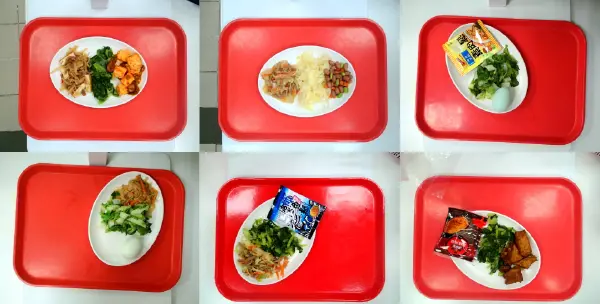
Real-World Challenges in AI Food Recognition (Part 2)
How AI Identifies Cups and Plates?
(Tableware Recognition)
May 20, 2025
In our previous article, we explored the real-world challenges of AI food recognition — from lunch boxes to sushi and yakitori. But food isn’t the only thing AI needs to understand. There’s another key player in the dining experience: tableware.
Cups, bowls, and plates might seem trivial, but in specific business scenarios, they play a crucial role. In this article, we take a closer look at real-world cases from AI provider Viscovery — how AI recognizes various types of tableware, where the technology is applied, and the challenges of making it reliable in everyday settings.
Different Cups = Different Items: Can AI Tell the Difference?
In many dining environments, businesses use specific types of cups to distinguish between products. For example:
- A ceramic mug might indicate hot coffee
- A black ceramic cup might signal hot tea
- A clear plastic cup might represent a cold drink like juice or soda
Instead of labeling every cup, the container itself becomes the “identifier.” At checkout, the system only needs to recognize the cup to determine the price.
That’s where AI comes in — it needs to accurately identify cups based on shape, color, and size. But in real-world settings, things can get tricky:
- Cups may have scratches or water stains
- Lighting glare can obscure clear plastic cups
- Cups may be placed at various angles
These factors can interfere with accurate detection. To address this, Viscovery’s AI vision system is trained on a large dataset of images — essentially a textbook of visual examples — to help it reliably recognize cups in all kinds of conditions and speed up the checkout process.

Different Plates, Different Prices: AI Can Help Sort It Out
In places like central kitchens or large corporate cafeterias, different dishes are served on specific types of tableware:
- Deep bowls for soup
- Long plates for fish or entrees
- Small round plates for desserts or side dishes
As long as these rules are consistent, AI can be used during checkout to identify which dishes were selected, making the billing and data analysis process much more efficient.
However, this isn’t always simple. Even plates of the same type can vary due to wear and tear, manufacturing differences, lighting conditions, or dirt. Some plates may even look similar but correspond to different prices.
This demands a high level of precision from the AI. To solve this, Viscovery’s team has fine-tuned its training data using real-world environments, so the system can spot subtle differences and avoid confusion.

Leftovers in the Bowl? AI Needs to See Through the Mess
Another real-world scenario is post-meal checkout, where customers bring used dishes to the counter. These plates and bowls may still have soup, scraps of food, or even bones on them.
AI’s job is still to recognize the type of bowl or plate — without being distracted by what’s inside. This is much more difficult than identifying clean tableware, because:
- Broth can obscure the pattern or color at the bottom of the bowl
- Leftovers might cover key features of the dish
- Reflections on the surface can blur the image

Teaching AI to ignore the contents and focus on the container itself is a serious technical challenge. But it’s a common need across various real-life settings — like the conveyor belt sushi restaurants, where plate colors indicate price points. The AI must be able to correctly identify the color and shape of the plate — even with leftover soy sauce or food still on it.

The good news? After years of R&D, Viscovery has overcome this obstacle. Their AI can now handle complex tableware recognition in self-service dining, helping to reduce labor costs and speed up operations.

AI Doesn’t Just Recognize Food — It Understands What Holds It
The use of AI in foodservice goes well beyond recognizing meals. Identifying cups and plates brings its own set of challenges, but it also opens the door to valuable new applications.
From distinguishing types of tableware, to mapping them to menu items, to handling post-meal scenarios with leftover food — AI is becoming an indispensable part of the checkout experience.
As user-friendly design continues to advance, these AI-powered systems are becoming more accessible than ever. You don’t need to be a tech expert to take advantage of them. The future of AI in dining is practical, inclusive, and just getting started.

